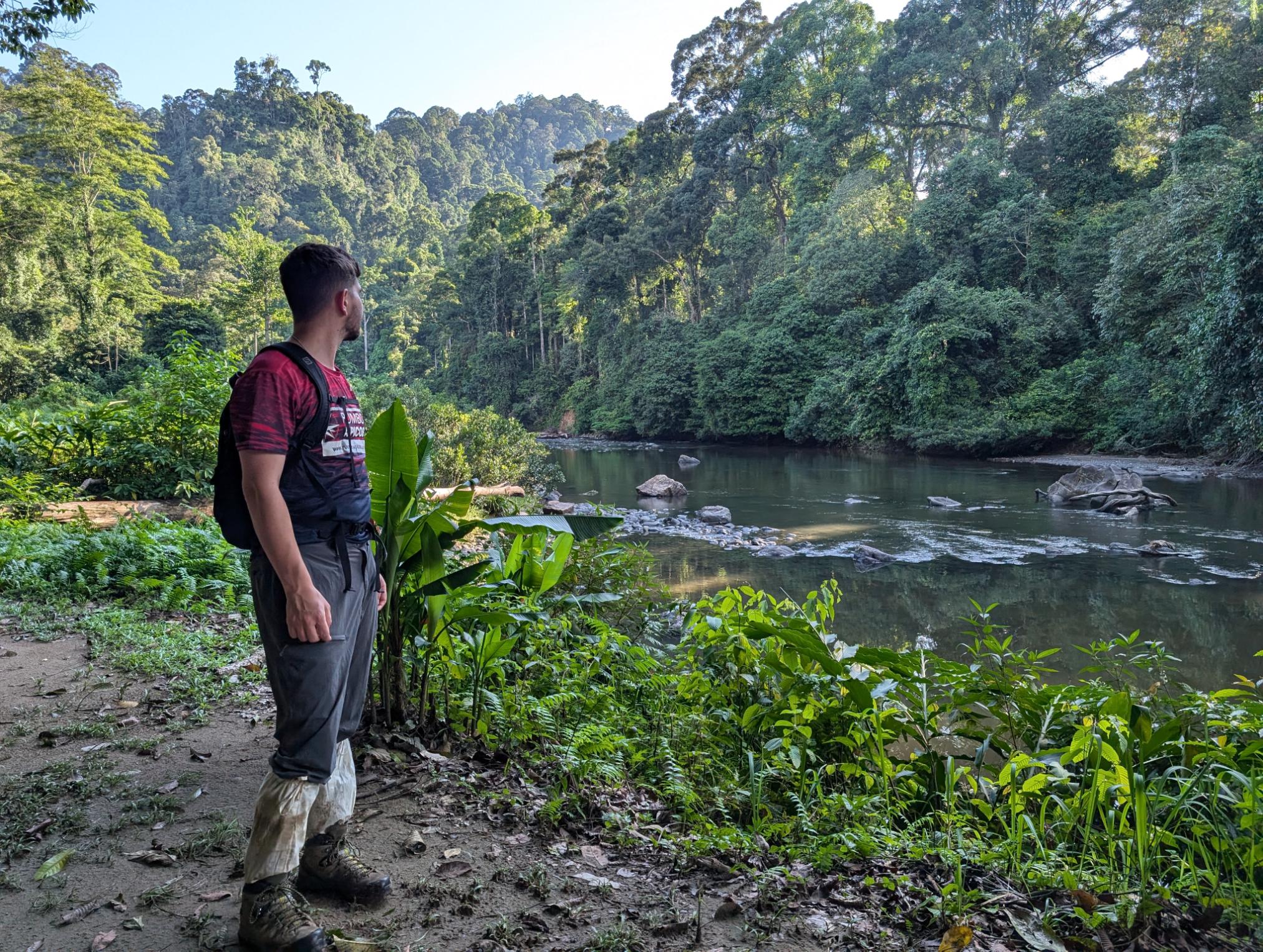Borneo is a natural wonderland. This huge island - which is divided between the countries of Malaysia, Indonesia and Brunei - is a place of dreams for many wildlife lovers; an island where the call of gibbons is the morning alarm clock and orangutans still swing from tree to tree.
Visiting the island for several weeks, and exploring coast to coast, by rivers and rainforests, felt like being truly immersed in a David Attenborough documentary.
Look out for rustling leaves and big movements in the trees - and keep those binoculars handy...
Bushy-crested hornbills would fly over our heads and civets would walk by our balcony as we drank our morning coffee. Even shallow snorkelling trips would reveal clownfish protecting tiny offspring in glowing anemones, while paddling through mangroves we saw stork-billed kingfishers and leaping proboscis monkeys. With their long, floppy noses and large pot bellies, these monkeys remind locals of colonial sailors. In Malay, they’re called the ‘Dutch Monkey’.
We visited Sabah, in the north of Malaysian Borneo, and hiked through an 130 million-year-old rainforest. Walks featured orangutans nibbling on figs, sun bears lounging near trees and elephant tracks, which our expert local guides would pick up on and follow. Blowing on high, green offshoots could reveal the defensive marching sounds of an ant colony, while in higher trees, we saw endemic Sabah langurs and red leaf monkeys, with their energetic, blonde babies.
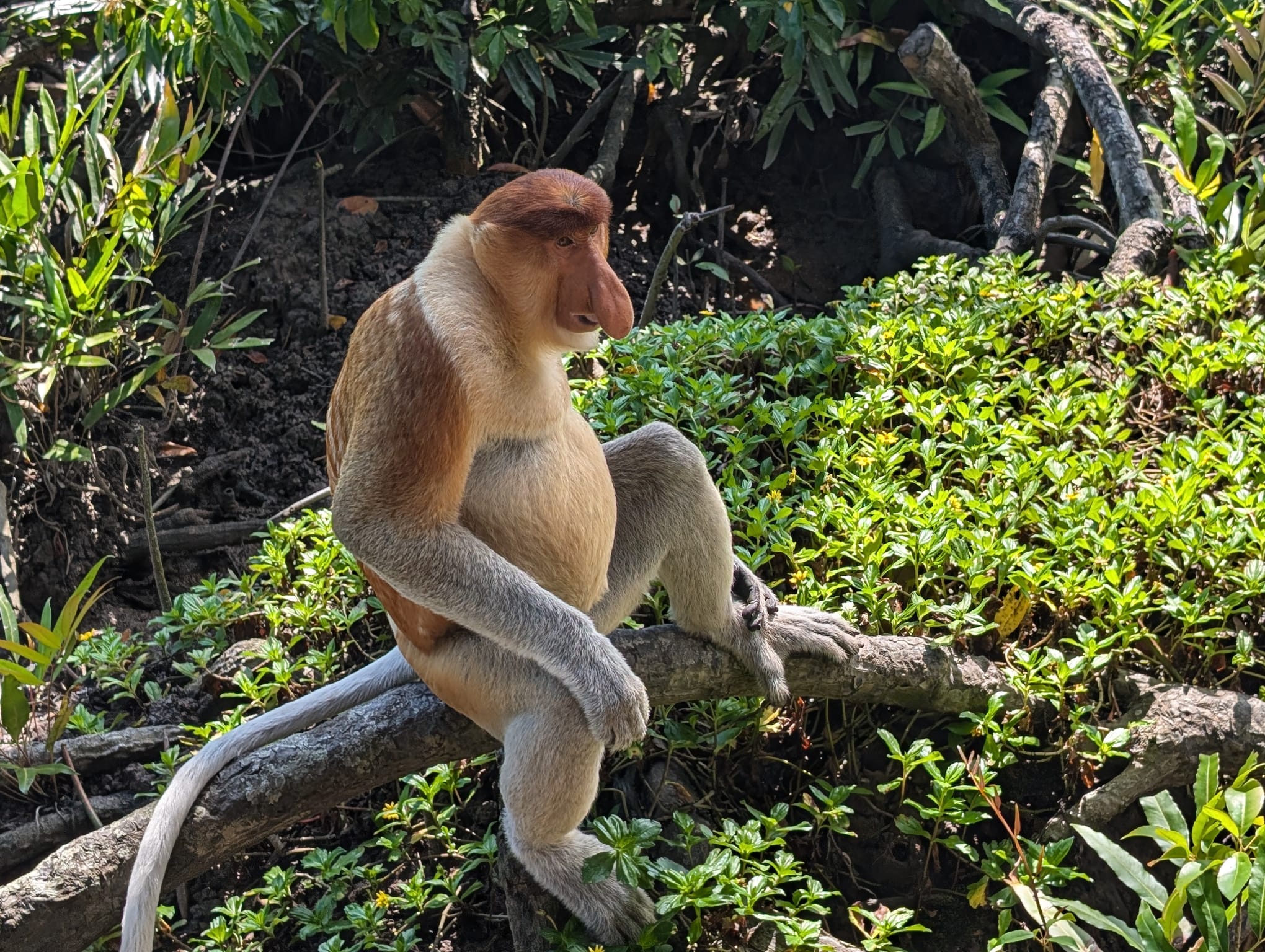
The days were hot and incredibly humid. We sweated, a lot, which only made the hidden lagoons, deep in the forests, all the more idyllic for swimming. We ate a lot of rice, and pinched ourselves crossing vibrant rivers and by sunny coastlines.

Each night our jaws dropped, as we watched giant flying red squirrels glide from tree to tree. We spotted glow in the dark scorpions and stared into the (remarkably large) eyes of slow lorises and western tarsiers beneath the milky way, and perfect starry skies. We watched leopard cats, owls and eagles, colourful frogs, bright spiders and kept our distance from a handful of deadly, if beautiful snakes.
Of course, much of the rainforest here has been replaced by palm oil plantations in the past hundred years. You do notice that as you move from nature reserve to nature reserve, but being immersed in the remaining rainforest, which is now protected, is a rejuvenating experience. This is a vibrant ecosystem, still thriving and intact at a time when global biodiversity is suffering more by the day.
It reminds us what we once had - and why we must protect what is left of it.
Now, given the remote nature of Borneo, there were quite a few things I found it hard to get details on before I went. Having now been, I thought I’d pass along a few tips for visiting. Here’s what I wish I knew before visiting Malaysian Borneo.
Orangutans Can Be Anywhere, Anytime
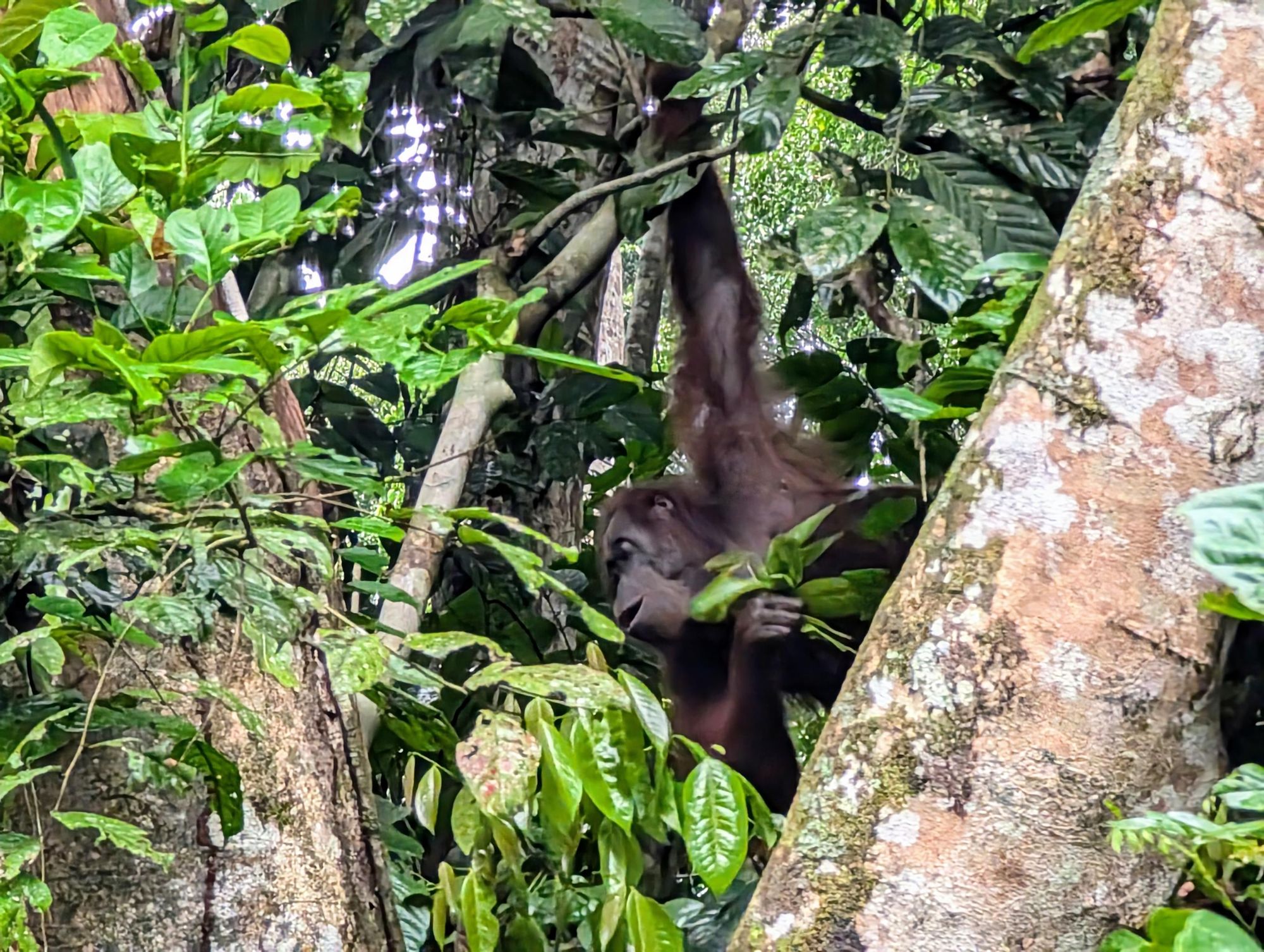
The first time I saw a wild orangutan was in Tabin Wildlife Reserve, in the southeast of Sabah. We were on our way back from a hike through dense secondary rainforest, having visited a mud volcano - a big, circular clearing with bubbling mud dotted around it - which animals flock to for a source of salt.
I remember mynah birds calling high above us and blue-throated bee-eaters - beautiful birds with bright blue and glittering green plumage - fluttering around.

As we neared the end of this trail, we largely stopped looking for wildlife and began chatting to one another. It happened to be at this exact moment that we all, unwittingly, walked directly beneath a wild orangutan. Thankfully, our guide Eilsa was still paying attention. She called us back up the trail, quieted us down, and we were able to spend 15 minutes watching this wonderful animal - a pregnant female - hand-picking figs before moving into the cluttered interior.
Wild orangutan sightings can happen anywhere, anytime. You can hike for hours and maybe catch a glimpse of one in the distance, or walk 500m from your doorstep and see three at once, 10m away. Look out for rustling leaves and movement.
Don’t Stress About Leeches
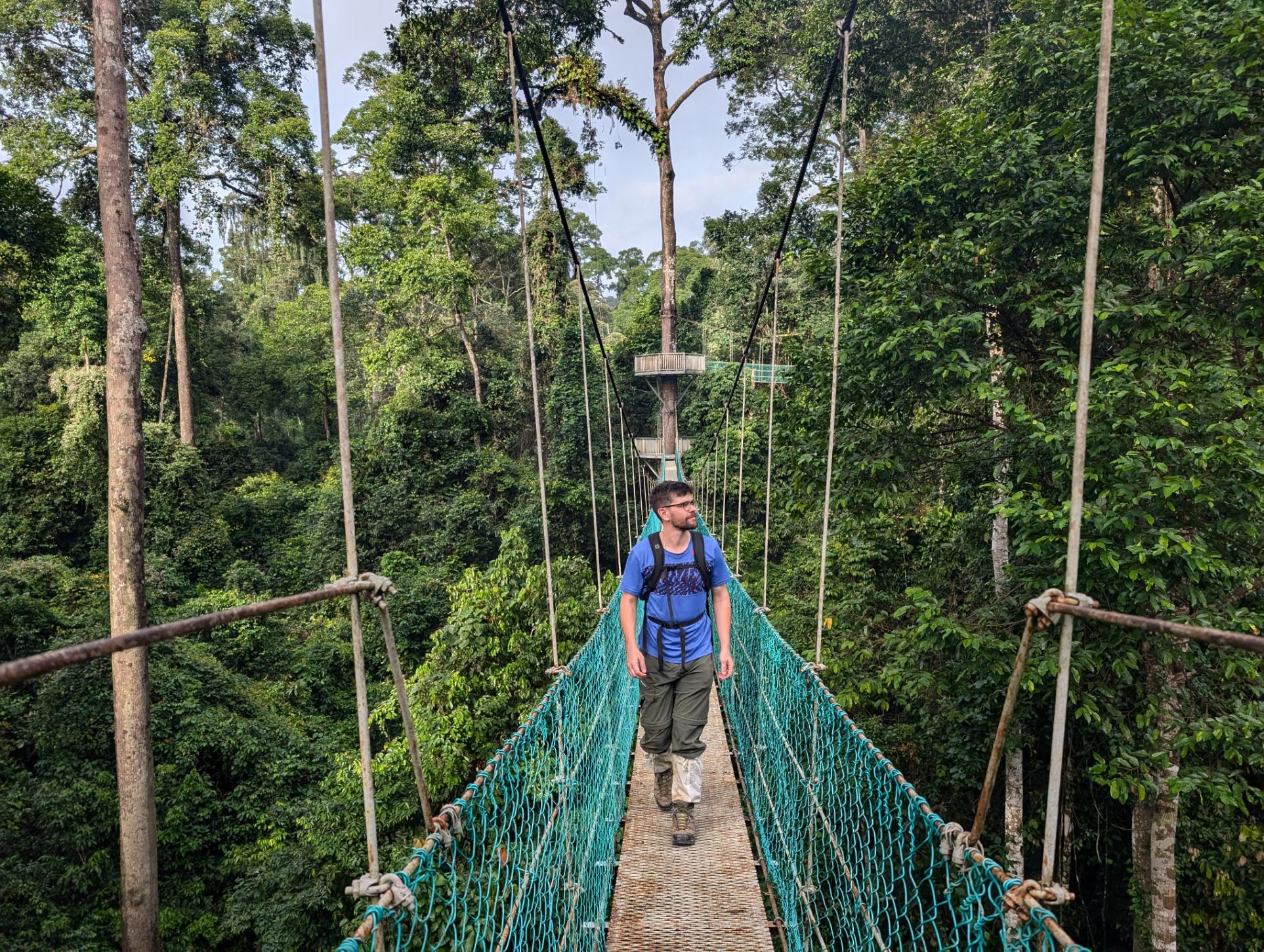
There is one item on the Borneo kit list that strikes fear into budding travellers: the humble ‘leech sock’. For the uninitiated, a leech sock is a long polyester or nylon sock that you put on over your socks and trousers (but before you've put your hiking boot on). You then tie it around the calf and it will protect you from bites if a leech manages to find its way into your boot while you’re hiking.
You will almost definitely see some leeches while in Borneo. But while they may make your family back home pull funny faces, they're no big cause for concern.
Most leeches will actually end up on your guide, as they lead the group through the jungle from the front. When one does inevitably find its way onto your body - check your trousers, t-shirt, hand, hiking boots - you don’t need to burn it off with a cigarette or use tweezers, you literally just flick it away. Bye bye.
If a leech does bite you, it will then fall off naturally. Keep the bite clean and stick on a plaster, then get on with your day. I was apprehensive about leeches before I arrived in Borneo, but once you’re out in the rainforest, you forget all about them, and flicking them off becomes a fun little mini-game you get to occasionally do.
Embrace the leech sock - even if it's not high fashion - and relax in the rainforest.
Watch Where You're Putting Your Hands
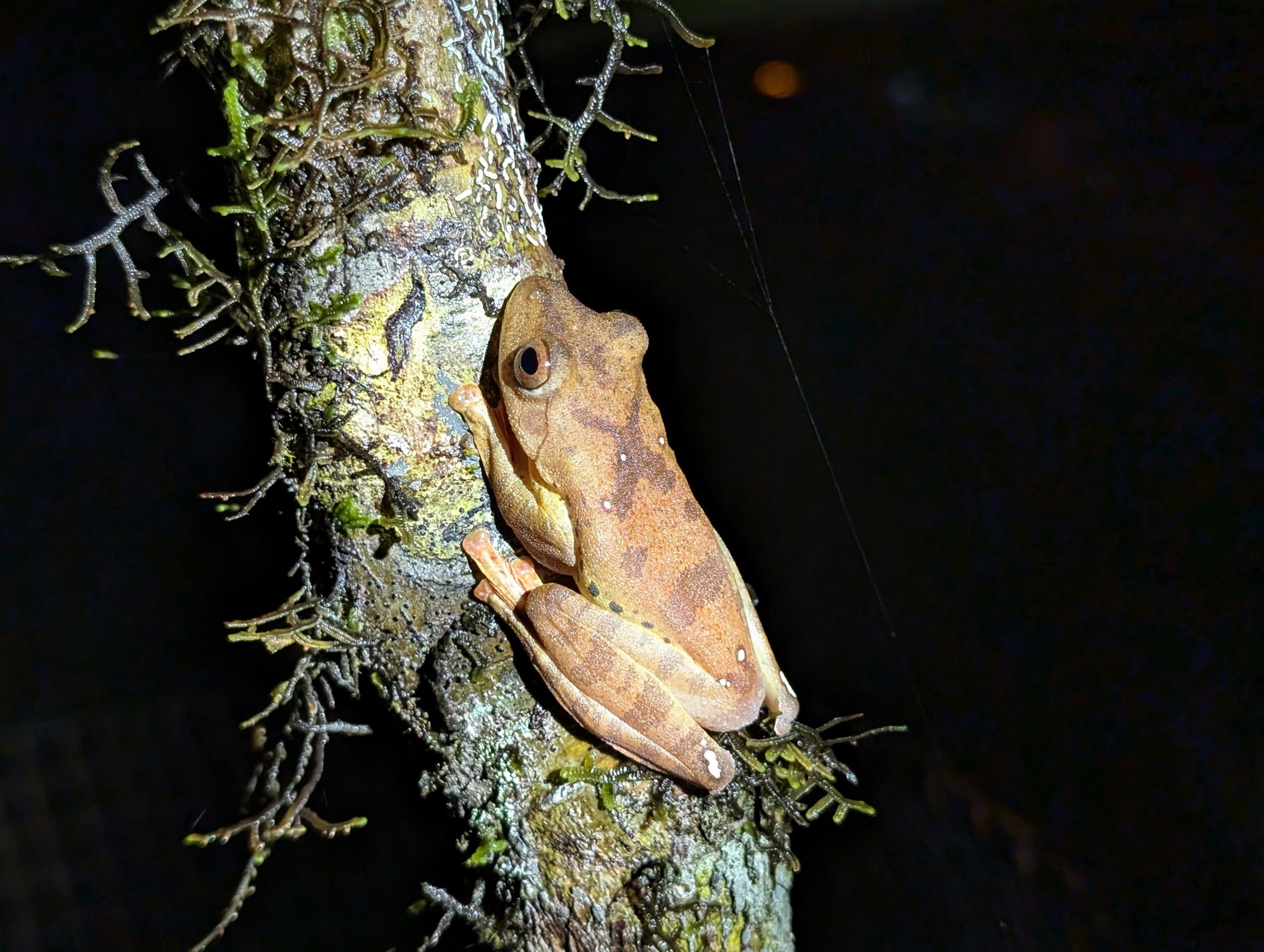
This one is simple. Watch where you put your hands and feet in the jungles of Borneo. It is quite feasible that the bannister you’re about to grab for balance has a large, hairy tarantula on it. The tree trunk you’re hoping will help you climb a hill may be part of a termite superhighway. That branch you're about to grab might actually be a stick insect, and there's a chance that banana plant leaf you’re about to pull on may have a whiskered myotis bat sleeping inside.
There are some insanely spiky plants in Borneo too - something an umbrella of mine found out the hard way - and while certain plants can cure wounds, others will give you nasty rashes. Ask your guides if you’re ever in doubt, and always expect the unexpected in this weird and wonderful land of biodiversity and obscure critters. One time, I found a scorpion hiding in my fold up toothbrush.
Embrace the Ecosystem, Not Just the Wildlife
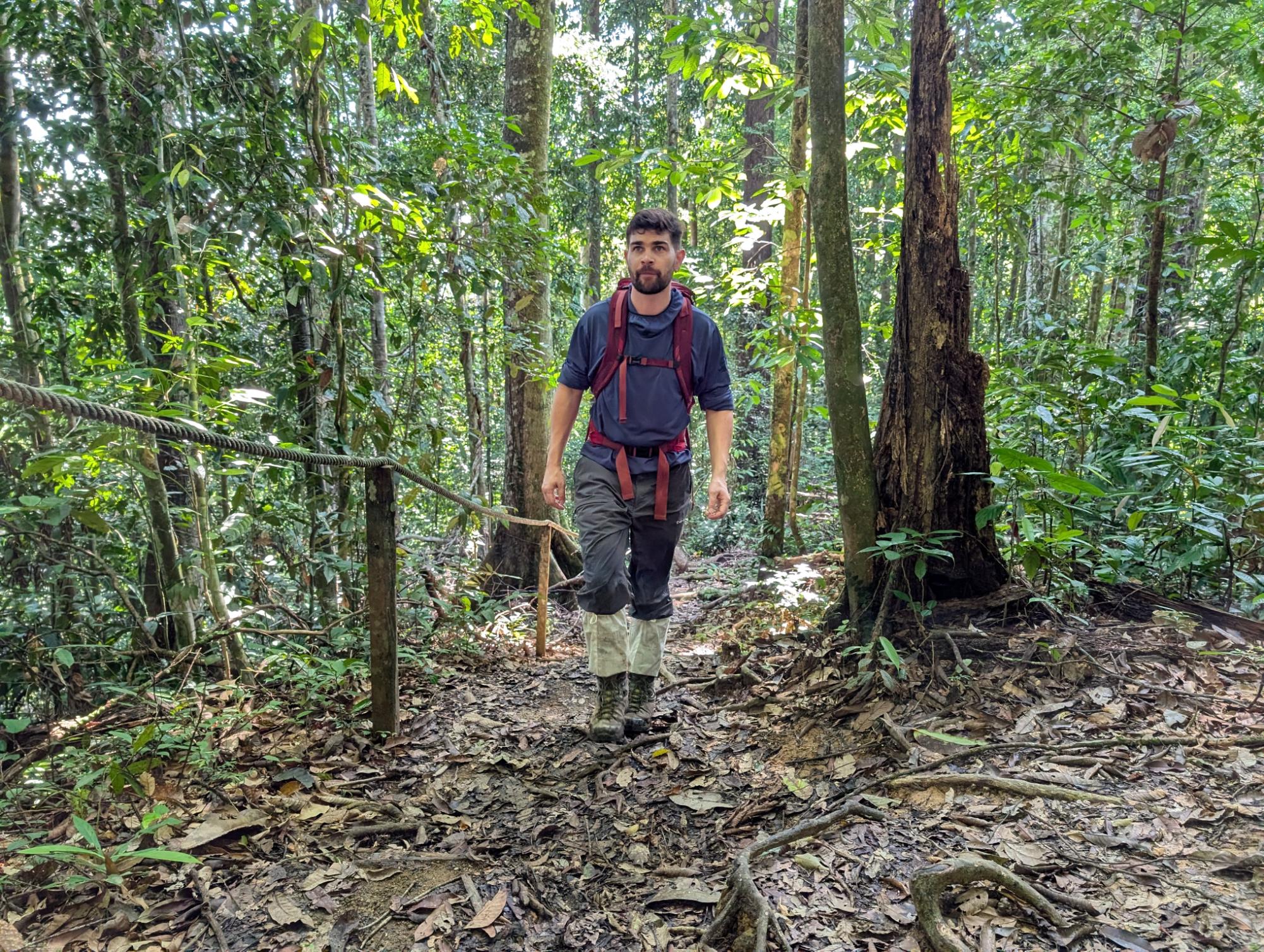
I was dumbstruck after returning from a great hike in Tabin one day to hear an American lady older than I (and in a different group) complaining to her guide about the lack of animals they'd seen. “It’s not like the African plains,” she drawled. Leaving aside the unchecked privilege of this, and the fact that the wildlife here is not, in fact, remote controlled, she was right about one thing. Seeing animals in a dense rainforest is more difficult than seeing them in the open plains of Africa. There are trees in the way - and many of the creatures are nocturnal. This lady was, though, missing the beauty of her surroundings.
While in Borneo, you will see remarkable wildlife. It will mean all the more when you connect to the landscape it lives in.
We were super lucky in Borneo. I struggle to remember three hours where we went without seeing some form of remarkable wildlife, be it longhorn beetles, lantern bugs, red leaf monkeys or storks flying across a river. Of course, we also went on a few hikes where we didn't see a lot of wildlife. They were also great.
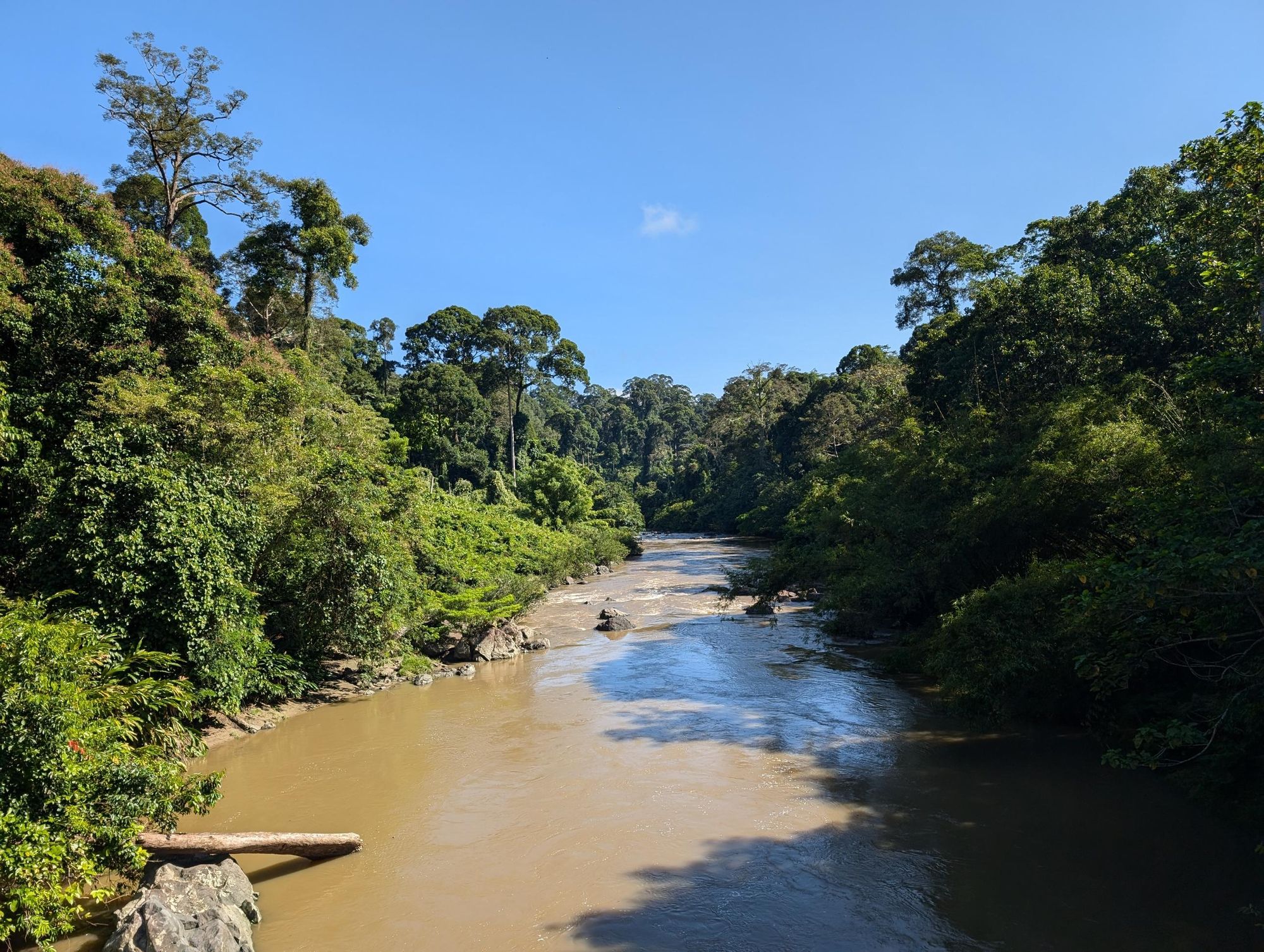
To rate a hike in Borneo by only the wildlife that you see is to reduce it to a box-ticking exercise, and misses the wonder of being in such an ancient landscape. Even if you don’t see an orangutan or a pygmy elephant, you are moving through an utterly unique habitat sculpted by, and healthy enough to support, these amazing animals. There is a majesty to just standing in a fully-functioning ecosystem, untouched by humans and home to so many endemic species.
While you walk, try and pick out the calls of hornbills from the blaring chorus. Look at how liana and fig trees wrap around the dipterocarp forests. Notice the trunks taken apart by termites, spot pill millipedes, which roll up into a ball when bothered on the forest floor and stay aware of the changing scents as you pass bright and peculiar flowers. While in Borneo, you will see remarkable wildlife. It will mean all the more when you connect to the landscape it lives in.
Don’t Look a Macaque in the Eye
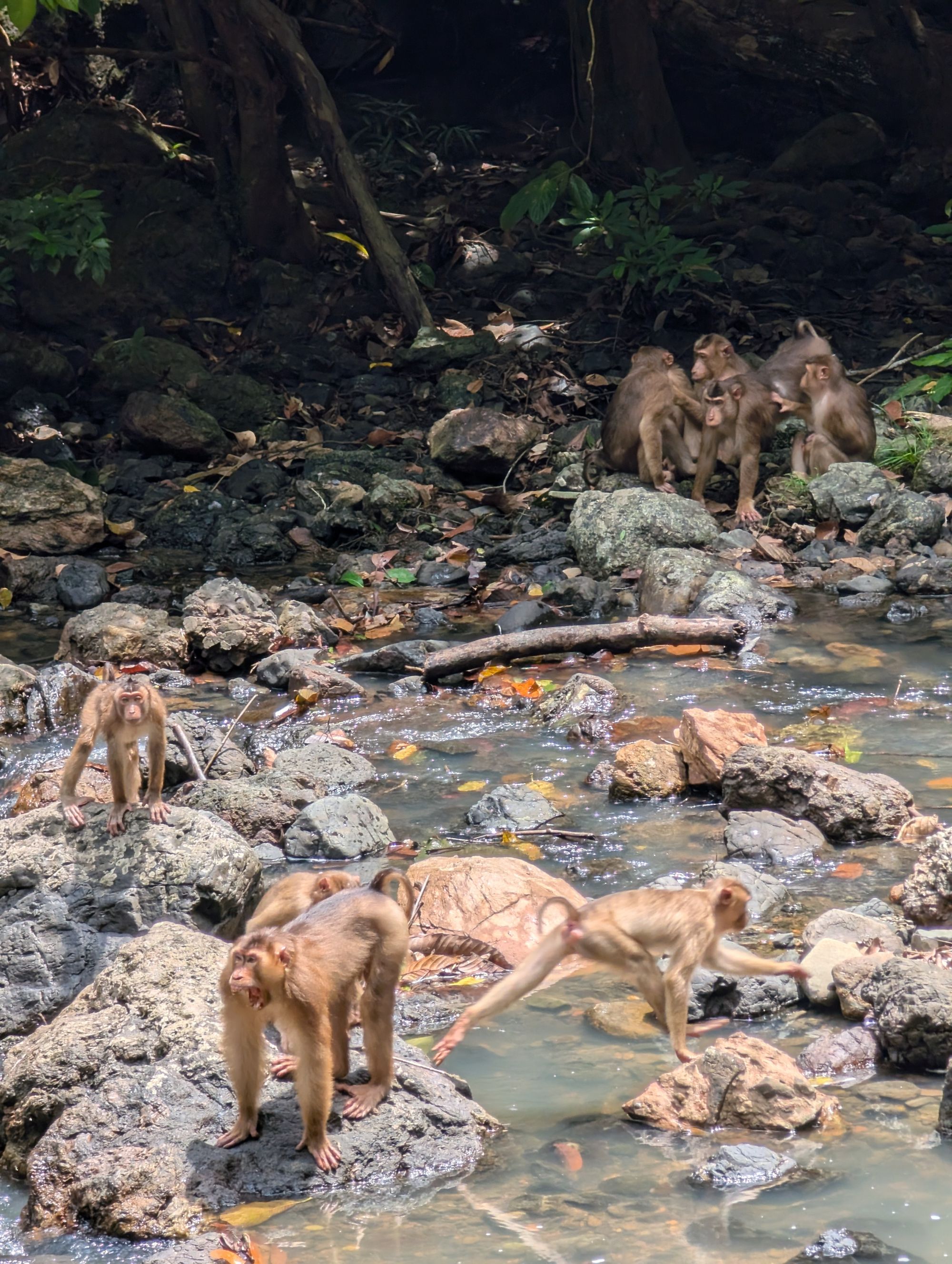
Some people tire of macaques quickly. They’re not particularly rare in Borneo, or elsewhere in Asia. I, on the other hand, can binge watch them all day - like a bad reality television show. Macaques are pure chaos; a collection of furry limbs, falling over one another, trying to steal anything and everything that exists.
They are pure entertainment. I recall a troupe of around 100 descending down a river bank bouncing off rocks, with babies stuck to mothers. I think of the time in the Danum Valley I watched them throwing figs at one another.
Learn from my mistake and don’t accidentally challenge a monkey to a fight. One macaque even tried to fight our car, so it will probably accept the challenge...
Unfortunately, I also recall the time a macaque appeared out of the forest while I was snorkelling and tried to steal my phone and bag. When I made eye contact, it got aggressive and almost knocked me off my feet. I learned later that these monkeys take eye contact as a sign of aggression - and even as a challenge. So, learn from my mistake and don’t accidentally challenge a monkey to a fight. One macaque even tried to fight our car, so it will probably accept the challenge.
Bring your Binoculars Everywhere
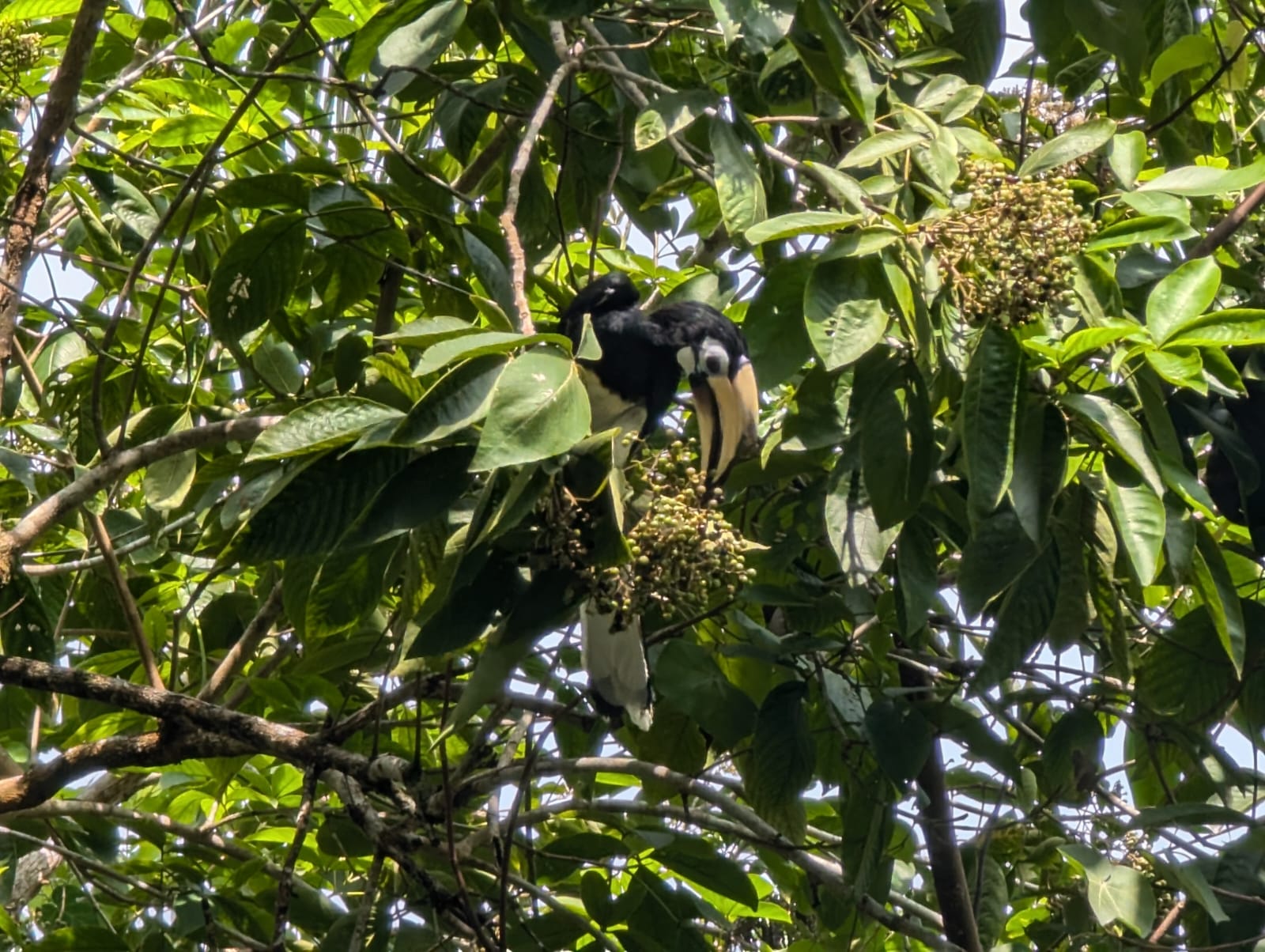
No animal is boring in Borneo, and when you’re in the middle of an 130 million year old rainforest like the Danum Valley, remarkable creatures can pop up anywhere. I saw a great argus pheasant, with a comically long, two-metre tail, in the middle of the road one day while walking to get some water. In Tabin we saw rhinoceros hornbills and gibbons sharing trees right next to our cabin. While walking to lunch one day we saw the endemic Bornean bristlehead, and another time, a bright yellow, oriental dwarf kingfisher sitting pretty in a bush.
Every animal seems to have odd variants in Borneo. Squirrels come tiny, massive or gliding. Snakes can slither, swim and fly. Frogs come in every pattern you can dream up - and even pigeons hit different here. Once you've seen a Nicobar, with its bright blue, yellow and green plumage, plus carnival feathers, you'll never think of pigeons the same again.
Bring your binoculars with you in Borneo - everywhere you go.
Inspired? Check out our range of adventure holidays in Borneo now!

